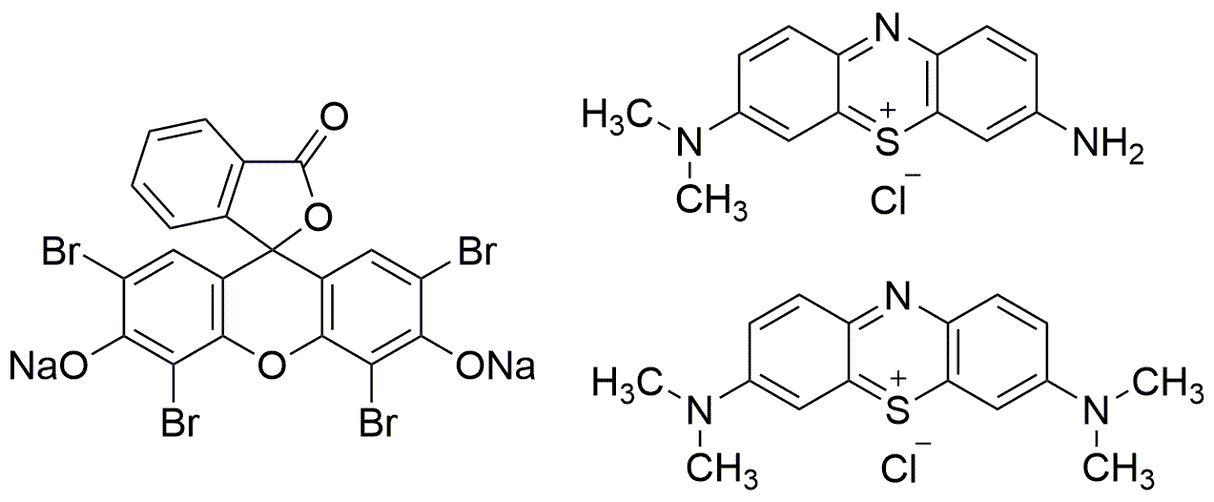Tetrachrome Stain (MacNeal) is widely utilized in research focused on:
- Histology and Pathology: This stain is essential for visualizing cellular structures in tissue samples, enhancing contrast in microscopy, and aiding in the diagnosis of diseases such as cancer.
- Microbiology: It is used to differentiate bacterial species in clinical samples, allowing for more accurate identification and treatment options.
- Pharmaceutical Development: Researchers employ this stain to assess the efficacy of drug formulations by observing cellular responses to various compounds.
- Environmental Science: The stain helps in studying the effects of pollutants on cellular structures in aquatic organisms, contributing to ecological assessments.
- Forensic Science: It is applied in forensic investigations to highlight biological samples, aiding in the identification of substances in crime scene analysis.
Informations générales
Propriétés
Sécurité et réglementation
Applications
Tetrachrome Stain (MacNeal) is widely utilized in research focused on:
- Histology and Pathology: This stain is essential for visualizing cellular structures in tissue samples, enhancing contrast in microscopy, and aiding in the diagnosis of diseases such as cancer.
- Microbiology: It is used to differentiate bacterial species in clinical samples, allowing for more accurate identification and treatment options.
- Pharmaceutical Development: Researchers employ this stain to assess the efficacy of drug formulations by observing cellular responses to various compounds.
- Environmental Science: The stain helps in studying the effects of pollutants on cellular structures in aquatic organisms, contributing to ecological assessments.
- Forensic Science: It is applied in forensic investigations to highlight biological samples, aiding in the identification of substances in crime scene analysis.
Documents
Fiches de données de sécurité (FDS)
La FDS fournit des informations de sécurité complètes sur la manipulation, le stockage et l’élimination du produit.
Spécifications du produit (PS)
Le PS fournit une description complète des propriétés du produit, notamment sa composition chimique, son état physique, sa pureté et les exigences de stockage. Il détaille également les plages de qualité acceptables et les applications prévues du produit.
Certificats d'analyse (COA)
Recherchez des certificats d'analyse (COA) en saisissant le numéro de lot du produit. Les numéros de lot et de lot se trouvent sur l'étiquette d'un produit, après les mots « Lot » ou « Lot de fabrication ».
Numéro de catalogue
Numéro de lot/série
Certificats d'origine (COO)
Ce certificat d'exploitation confirme le pays dans lequel le produit a été fabriqué, et détaille également les matériaux et composants utilisés et s'il est issu de sources naturelles, synthétiques ou autres sources spécifiques. Ce certificat peut être requis pour les douanes, le commerce et la conformité réglementaire.
Numéro de catalogue
Numéro de lot/série
Fiches de données de sécurité (FDS)
La FDS fournit des informations de sécurité complètes sur la manipulation, le stockage et l’élimination du produit.
DownloadSpécifications du produit (PS)
Le PS fournit une description complète des propriétés du produit, notamment sa composition chimique, son état physique, sa pureté et les exigences de stockage. Il détaille également les plages de qualité acceptables et les applications prévues du produit.
DownloadCertificats d'analyse (COA)
Recherchez des certificats d'analyse (COA) en saisissant le numéro de lot du produit. Les numéros de lot et de lot se trouvent sur l'étiquette d'un produit, après les mots « Lot » ou « Lot de fabrication ».
Numéro de catalogue
Numéro de lot/série
Certificats d'origine (COO)
Ce certificat d'exploitation confirme le pays dans lequel le produit a été fabriqué, et détaille également les matériaux et composants utilisés et s'il est issu de sources naturelles, synthétiques ou autres sources spécifiques. Ce certificat peut être requis pour les douanes, le commerce et la conformité réglementaire.

